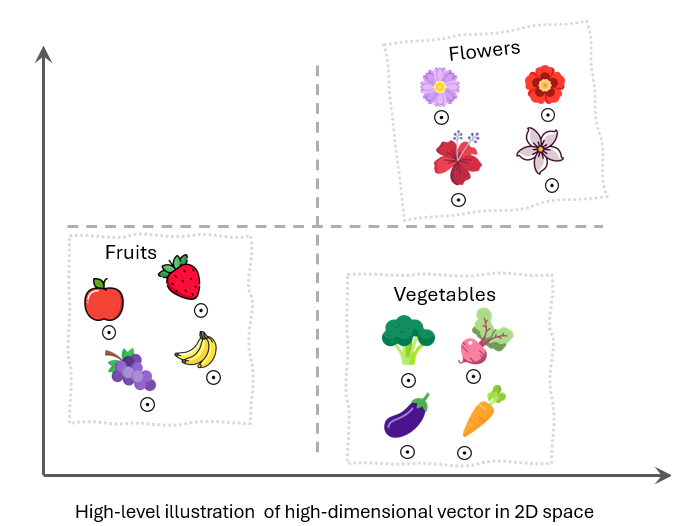1. Understanding Vector Order
The index refers to the sequence in which vectors are stored. This order is crucial because it influences how vectors relate to one another.
2. Key Components of a Vector:
Orgin : This is the starting point of the vector.
Direction: This indicates the path the vector takes in the embedding space.
Magnitude: his is the length of the vector, which represents its significance or strength.
3. Relationship Between Vectors
The origin, direction, and magnitude together define how vectors interact with each other. These relationships are essential for the retrieval mechanism, which compares vectors to assess their similarity.
4. Vector Proximity:
Consider an embedded vector representing the fruit "Apple." This vector might be stored close to the vector for "Banana" due to both being common fruits. Their proximity in the index indicates their relatedness, making it easier for the system to retrieve information about similar items.
5. Utilizing the Index for Retrieval
When comparing vectors, the retrieval mechanism uses their positions in the index to determine how closely related they are. The closer two vectors are, the more similar their meanings or contexts are likely to be, facilitating effective information retrieval. When the retrieval algorithm queries the vector database for “Apple” it might also return information of other fruits because of its proximity in the vector database.


